
Shakedown Street is a tenth studio album by rock band the Grateful Dead, released November 8, 1978, on Arista Records. The album came just over a year after previous studio album Terrapin Station. It was the final album for Keith and Donna Jean Godchaux, who left the band a few months after its release. The record was produced by Lowell George and John Kahn.
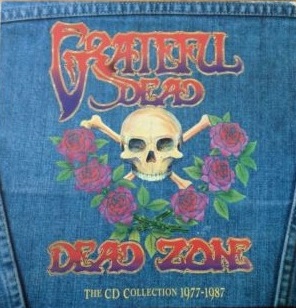
Dead Zone: The Grateful Dead CD Collection (1977–1987) is a six-CD boxed set retrospective of the Grateful Dead's studio and live albums during their time with Arista Records from 1977 to 1987. Prior to 1977, the band was on its own label, Grateful Dead Records.

The Arista Years is a compilation album that chronicles the Grateful Dead's studio and live albums during their time with Arista Records. The album was released on two-CD and two cassette tapes on October 15, 1996. It contains tracks from Terrapin Station, Shakedown Street, Go to Heaven, Reckoning, Dead Set, In the Dark, Built to Last, and Without a Net. The set does not contain any new or expanded recordings. A media outlet sampler, Selections from the Arista Years, was released by Arista in January 1997.

Selections from the Arista Years is a compilation album that chronicles the Grateful Dead's studio and live albums during their time with Arista Records. This is a one-CD sampler sent to radio stations, record stores, and print media outlets by Arista to promote The Arista Years, which had come out several months earlier. As with The Arista Years, the album contains tracks from Terrapin Station, Shakedown Street, Go to Heaven, In the Dark, and Built to Last, and does not contain any new or expanded recordings.

Dick's Picks Volume 3 is the third live album in the Dick's Picks series by the Grateful Dead. It was recorded on May 22, 1977, at the Sportatorium in Pembroke Pines, Florida. It was released in November 1995 on Grateful Dead Records.

Dick's Picks Volume 34 is the 34th installment of the Dick's Pick's series of Grateful Dead concert recordings. It is a three CD set that contains the complete show recorded on November 5, 1977, at the Community War Memorial in Rochester, New York. It also includes additional material recorded on November 2, 1977, at the Seneca College Field House in Toronto, Ontario, Canada.
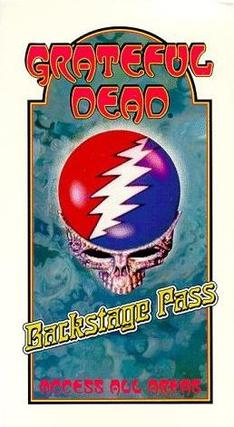
Backstage Pass is a music documentary video by the Grateful Dead. It was directed by Justin Kreutzmann, son of Grateful Dead drummer Bill Kreutzmann, and produced by Gillian Grisman, daughter of musician David Grisman. It was released in 1992, and is 35 minutes long.

Rocking the Cradle: Egypt 1978 is a live album by American rock band the Grateful Dead. It contains two CDs and one DVD and was released in 2008. The album was recorded September 15 & 16, 1978, at the Giza pyramid complex in Giza, Egypt. This was the third continent on which the band performed, having previously performed in Europe. The shows on the album were recorded on a 24-track multitrack recorder and were mixed down to stereo for the album's release.

To Terrapin: Hartford '77 is a live album by the American rock band the Grateful Dead. It was recorded at the Hartford Civic Center in Hartford, Connecticut, on May 28, 1977, the last show of the band's 26-date East Coast tour in the spring of 1977. It was released by Rhino Records on April 7, 2009.

Winterland June 1977: The Complete Recordings is a 9 CD live album by the American rock band the Grateful Dead. It contains three complete concerts. It was recorded on June 7, 8, and 9, 1977, at the Winterland Ballroom in San Francisco, California. The album was released on October 1, 2009.

May 1977 is a live album by the rock band the Grateful Dead. It contains five complete concerts, on 14 CDs. It was recorded at five consecutive shows, from May 11–17, 1977. Packaged as a box set, it includes a booklet with a historical essay and photos from the concerts, along with individual liner notes for each show. Produced as a limited edition of 15,000 numbered copies, it was released on June 11, 2013.

Dave's Picks Volume 12 is a three-CD live album by the rock band the Grateful Dead. It contains the complete concert recorded on November 4, 1977 at Colgate University in Hamilton, New York. It was produced as a limited edition of 14,000 numbered copies, and was released by Rhino Records on November 1, 2014. The album also includes over 75 minutes of bonus tracks recorded on November 2, 1977 at a concert at Seneca College in Toronto.

30 Trips Around the Sun is an 80-CD live album, packaged as a box set, by the rock band the Grateful Dead. Announced for the celebration of their 50th anniversary, it consists of 30 complete, previously unreleased concerts, with one show per year from 1966 through 1995. Comprising 73 hours of music, the box set is individually numbered and limited to 6,500 copies. It was released on October 7, 2015.
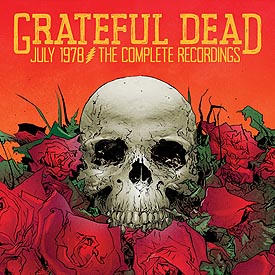
July 1978: The Complete Recordings is a live album by the rock band the Grateful Dead. Packaged as a box set, and produced as a limited edition of 15,000 copies, it contains five complete concerts on twelve CDs. It was released on May 13, 2016.

May 1977: Get Shown the Light is a live album by the American rock band the Grateful Dead. It contains four consecutive complete concerts, recorded on May 5, 7, 8, and 9, 1977, on eleven CDs. It was released on May 5, 2017.
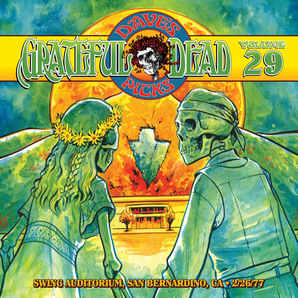
Dave's Picks Volume 29 is a three-CD live album by the rock band the Grateful Dead. It contains the complete concert recorded on February 26, 1977 at Swing Auditorium in San Bernardino, California, and three bonus tracks from February 27, 1977. It was produced as a limited edition of 20,000 copies, and released on February 1, 2019.

Grateful Dead Records Collection is a box set of albums by the rock band the Grateful Dead. It contains four albums on five LPs. The albums were previously released by the band's own record company, Grateful Dead Records. They were remastered for the box set, and pressed on 180-gram vinyl. The albums included in the box set are Wake of the Flood, From the Mars Hotel (1974), Blues for Allah (1975), and Steal Your Face.
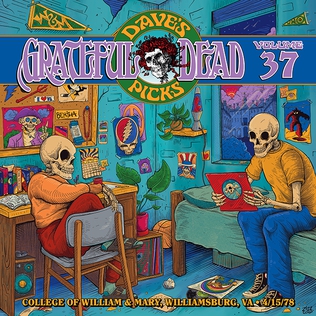
Dave's Picks Volume 37 is a three-CD live album by the rock band the Grateful Dead. It contains the complete concert recorded on April 15, 1978, at the College of William & Mary in Williamsburg, Virginia, as well as selections from the April 18 concert at the Civic Arena in Pittsburgh, Pennsylvania. It was released on January 29, 2021, in a limited edition of 25,000 copies.
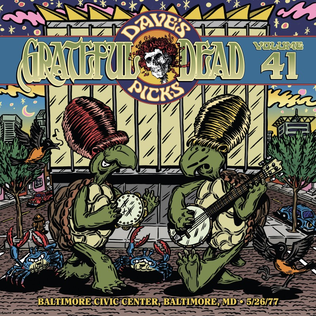
Dave's Picks Volume 41 is a three-CD live album by the rock band the Grateful Dead. It contains the complete concert recorded on May 26, 1977, at the Baltimore Civic Center in Baltimore, Maryland. It was released on January 28, 2022, in a limited edition of 25,000 copies.
"Terrapin Part 1" is a song suite by the Grateful Dead. Released on their 1977 album Terrapin Station, it takes up the album's entire second side. The piece, split up into seven distinct movements, is the band's longest studio recording at sixteen minutes and twenty-three seconds long. While the Grateful Dead never performed the song live in full, the first three sections of the song became commonplace in the band's setlists. The song's lyrics were written by Robert Hunter, with the music being written by Jerry Garcia, Mickey Hart, and Bill Kreutzmann.


















